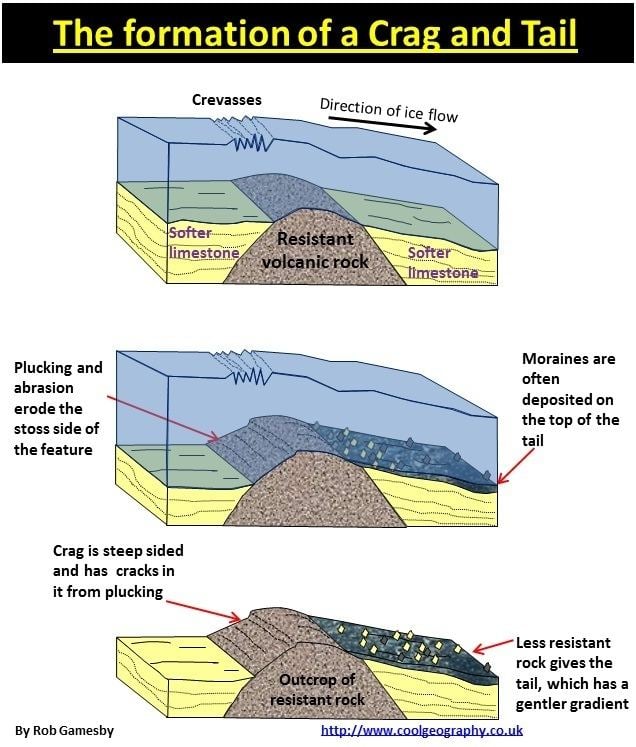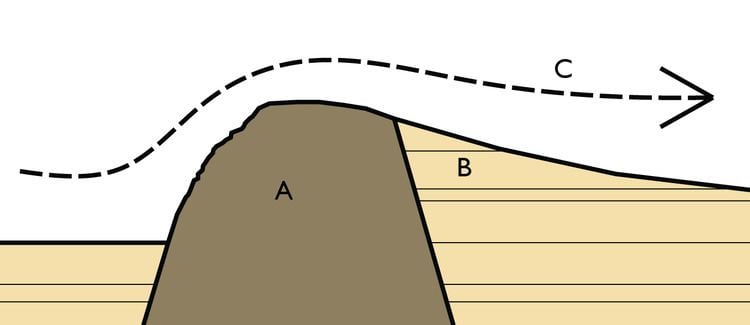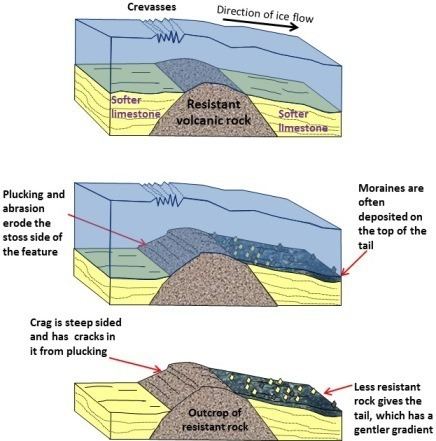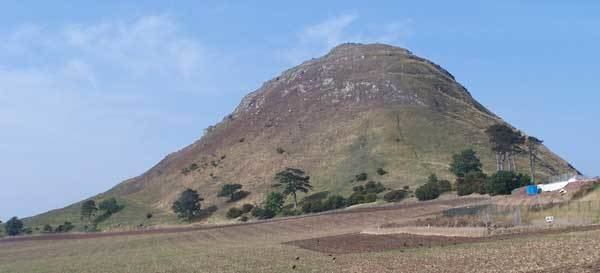 | ||
Similar Rock (geology), Drumlin, Arête | ||
Crag and tail
A crag (sometimes spelled cragg, or in Scotland craig) is a rocky hill or mountain, generally isolated from other high ground. Crags are formed when a glacier or ice sheet passes over an area that contains a particularly resistant rock formation (often a granite, volcanic plug or some other volcanic structure). The power of the glacier wears away the softer surrounding materials, causing the harder rock to stand out from the terrain. Often, the crag partially shields the softer materials from the glacier's force, leaving behind a sloping fan or ridge (known as the tail) on the sheltered side of the crag. This process results in a landscape feature with a pronounced ridge leading up to a prominent rock face.

In older examples, or those latterly surrounded by the sea, the tail is often missing, having been removed by post-glacial erosion.
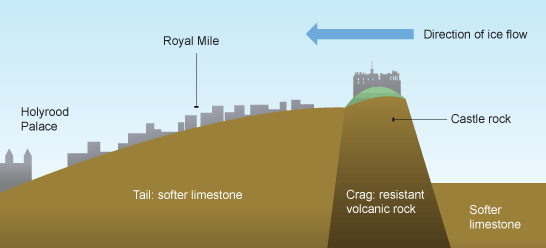
Examples of such crag and tail formations include:
